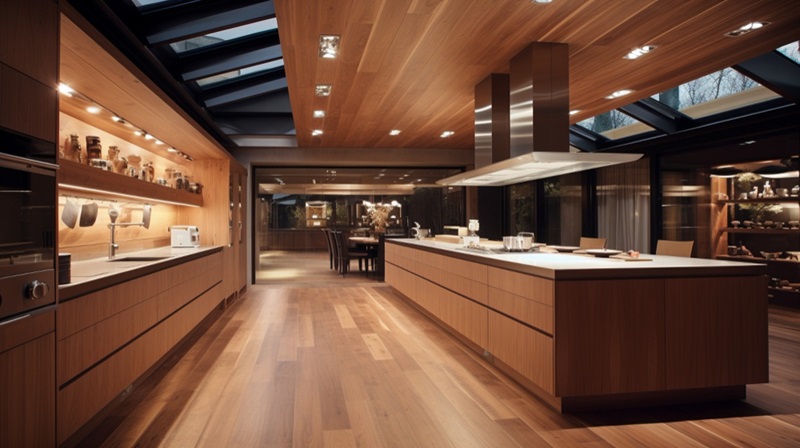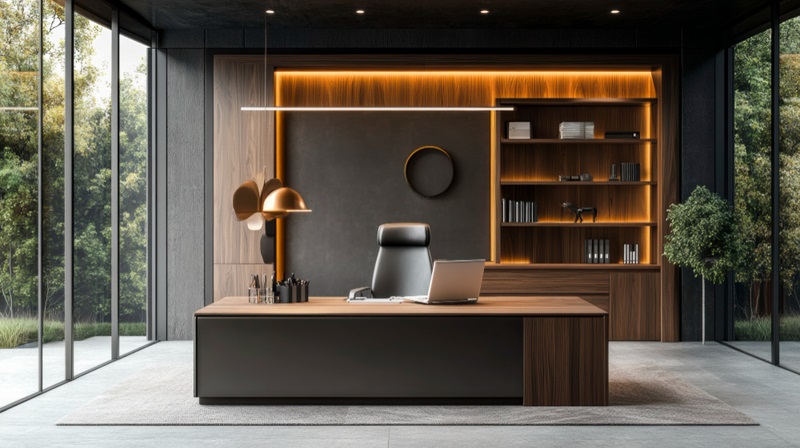Have you ever pondered on the philosophy that underpins the design of commercial cabinetry? Or wondered why the aesthetic and functional elements of cabinets in dental clinics differ vastly from those found in high-end boutiques? There is an art to designing commercial cabinetry that extends beyond surface appeal. It is all about harmonizing visual aesthetics with highly specific needs tailored to various industries. As we delve into this intriguing topic, we’ll explore how the mastery of commercial cabinetry design can effectively transform business environments and influence the daily operations of assorted industries.
Commercial cabinets are indispensable components of interior design, offering pragmatic solutions for space allocation and the organization of workspaces. They contribute substantially to standardizing operations, improving functionality, and reinforcing the business image. Today, we pull back the curtains, revealing how unique cabinetry designs can be wielded to embellish spaces, radiate the business’s character, and meet distinct industry objectives.
The Art behind Cabinet Designs
What makes a splendid cabinet design? Is it solely about aesthetics, or are there intricacies tacit but intrinsic to the design strategy? The answer is an amalgamation of these factors, a blend that harmonizes functionality, aesthetics, and industry-specific requirements. This harmonization is a well-choreographed dance between resource allocation, spatial planning, customer expectation, and industry norms.
Commercial cabinetry designs entail balancing aesthetics with industry standards and business needs. For instance, in healthcare facilities, designs need to prioritize sanitation, safety, and accessibility, while in retail, the focus is on durability and aesthetics to showcase product offerings. Hence, the cabinet design should reflect and meet the unique needs of the diverse industries.

Technological Advancements in Cabinet Designs
How has the advent of technology influenced commercial cabinetry? Does it merely add to the comfort factor, or is there a more profound influence? The progression in technology has touched nearly every industry, and commercial cabinetry is no exception. Computer-aided design software now allows designers to build and tweak designs in a 3D environment, enabling them to deliver precision and consistency in their designs.
Additionally, modern joinery machinery and techniques have empowered us with the ability to create cabinets of sophisticated designs while adhering to industry-specific requirements. As a result, we can now enjoy commercial cabinets that are both aesthetically pleasing and highly functional across different industries.
Customized Design: A Link to Brand Identity
Ever wondered how much a simple cabinet could communicate about your brand? Can it translate and reflect your brand’s identity? The answer is a resonating yes. Customizing commercial cabinets provides businesses with an opportunity to infuse their DNA into their interior design, promoting a consistent brand image.
When meeting clientele in varied industries, a meticulously tailored cabinet design could stir impressions about the company’s attention to detail, commitment to quality, and dedication to clients’ needs. Therefore, businesses should leverage bespoke cabinetry to personality their brand and create a lasting impression on their customers.
Navigating the Design Challenges
What are the challenges involved in customizing commercial cabinetry to different industries, and how can designers overcome these obstacles? Just like any other creative process, the design of commercial cabinetry comes with its worrying set of challenges. Notably, every industry has unique needs and requirements, making it necessary for the designer to become well-acquainted with the specifications of that particular industry.
Dealing with these challenges requires a keen understanding and appreciation of the delicate balance between aesthetics and functionality. The designer must also exhibit a willingness to learn about the specific industry, its operations, clientele, health, safety regulations, and required practices.
The Future of Commercial Cabinetry Designs
What trends are coming up in cabinetry designs, and what does the future hold for this field? In the era of sustainable practices and renewable resources, commercial cabinetry is steering towards green designs. Designers are more focused on durability, functionality, and efficiency while considering sustainable materials and environmental sensitivity.
Moreover, technology is increasingly becoming a vital part of the design process. Intelligent cabinets equipped with IoT sensors and AI capabilities are on the cusp of transforming commercial spaces.

Conclusion:
In our fast-moving world where the lines between function and fashion are constantly blurred, commercial cabinetry proves to be more than just storage. It eloquently bridges the gap between aesthetics, function, and brand representation, making it a critical consideration for businesses across diverse industries. As we head towards a future that promises even more integration of technology and sustainable practices in cabinetry design, the essential role of commercial cabinetry in enhancing business environments and operations will only become more pronounced. It reiterates the importance of tailoring designs to specific industry needs, thereby bringing forth the beauty of design with a purpose.
